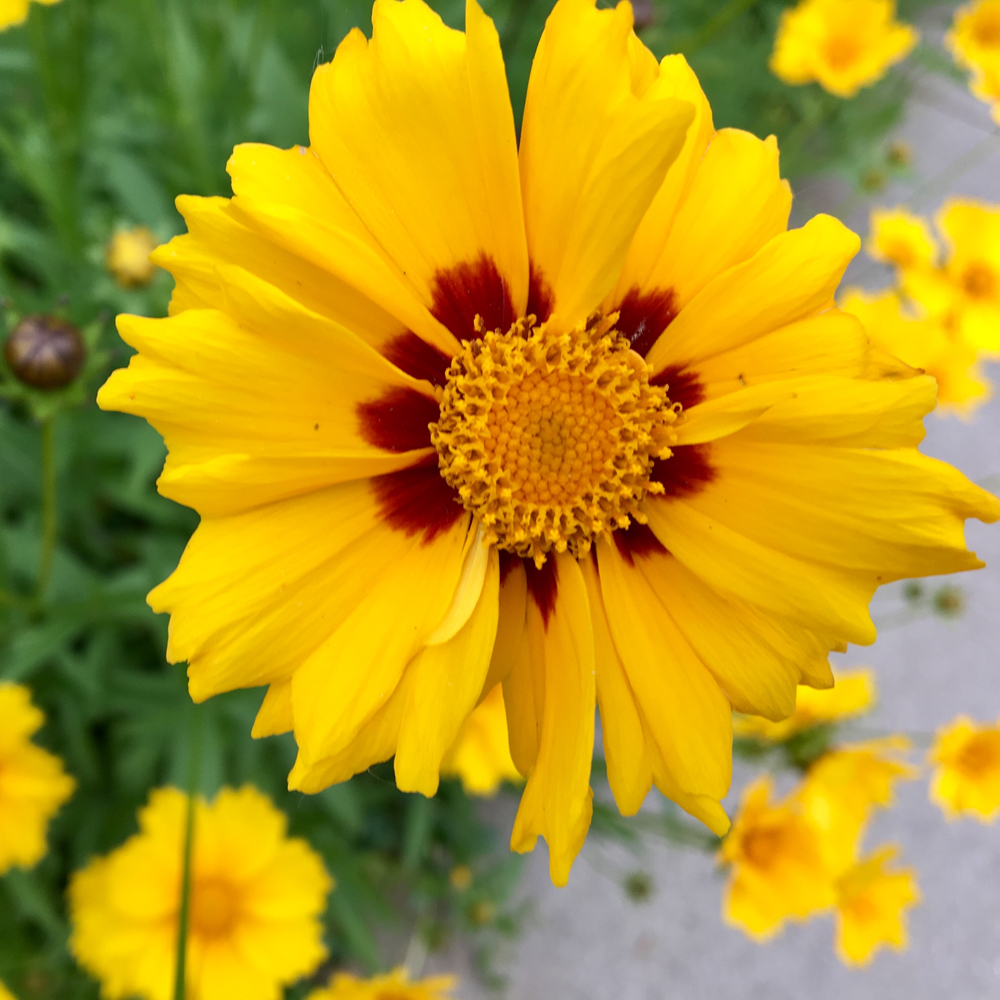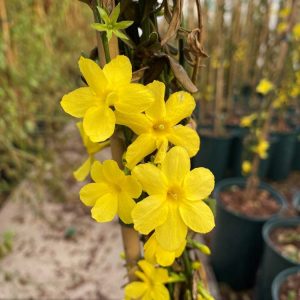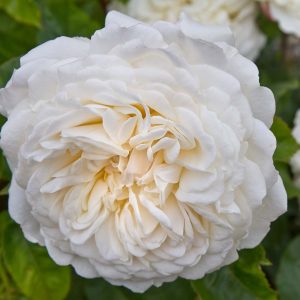Description
Coreopsis are mainly found in the Great Plains of North America, with members of the Genus found throughout the Americas. Members of the Daisy family they produce flowers in shades of red or yellow and can be bicolored, as well as being available in double varieties. Often grown in prairie planting schemes they look great planted alongside grass and have long flowering seasons, normally all through Summer and into Autumn,
Key Facts
- Common Name(s):Tickseed ‘Andiamo Yellow Red’
- Hardiness:Fully hardy
- How big will I get? Coreopsis grandiflora ‘Andiamo Yellow Red’ can grow to a height of 0.4m and a spread of 0.4m.
- Did You Know That:The name Tickseed comes from how similar the seeds look to insects, namely ticks found across its native range
Plant Calendar
A rough guide to how this plant will change through the year.
| Jan | Feb | Mar | Apr | May | June | July | Aug | Sept | Oct | Nov | Dec | |
| Flowering Time |   |
  |
  |
|||||||||
| Foliage Colour |  |
 |
 |
 |
 |
 |
 |
 |
 |
| J | F | M | A | M | J | J | A | S | O | N | D |
  |
  |
  |
|||||||||
 |
 |
 |
 |
 |
 |
 |
 |
 |
Care Guide

Soil Requirements
Coreopsis grandiflora ‘Andiamo Yellow Red’ prefers moist but well-draining soil. This plant can grow in soil with a wide range of pH levels, it is not picky about the pH level of the soil.

Best Position
Coreopsis grandiflora ‘Andiamo Yellow Red’ can handle either an exposed or a sheltered position and requires full sun to thrive, this consists of more than six hours of direct sunshine per day.

Maintenance
Coreopsis grandiflora ‘Andiamo Yellow Red’, like a lot of herbaceous perennial plants, will respond well to regular deadheading. This will encourage the plant to keep producing flowers all through Summer and into early Autumn. The plant can then be cut right back to the ground in Autumn, once it has concluded flowering, this will help to preserve energy for strong growth the following Spring.

Pest, Diseases and Wildlife
Coreopsis grandiflora ‘Andiamo Yellow Red’ can have problems with slugs and snails, and it tends not to have problems with diseases. It is also known to attract bees, butterflies and other pollinators. It is not considered to be toxic.





